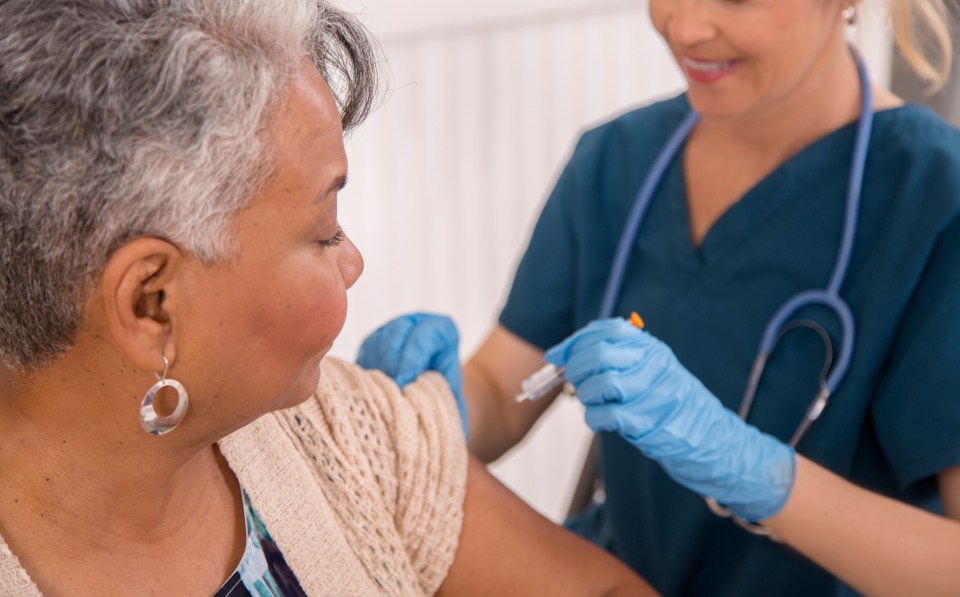Swallowing: we do it all the time. In fact, pay attention and you will notice yourself swallow your saliva as you read. But, how do you know if your swallow is normal or abnormal? Swallow function, much like breathing or blinking, is an automatic, bodily process that we rarely notice—that is, until something disrupts it.
As a speech-language pathologist at Encompass Health, I help individuals who have disruptions to their swallowing process.
I may begin my day by retraining a patient to swallow after a stroke, then move down the hallway to treat a patient who has difficulties swallowing due to Parkinson’s disease, and round-out my morning with a patient who has COPD and a history of multiple pneumonia episodes due to food or liquids going into her lung. It is obvious looking at my patients that swallowing disruptions can be caused by many different health conditions.
Despite each patient’s unique health condition, I educate all of my patients/families on normal and abnormal swallowing so that they can improve their independence with self-managing their condition, and, more importantly, feel empowered to report swallow-related changes to their doctor or speech language pathologist.
What is Normal Swallowing?
In short, swallowing is the process by which we move food or liquids from our mouth to our stomach. As we swallow, our body has two main goals:
- Efficiently move the food/liquid from the mouth through the throat to the esophagus (food pipe) so it can travel to the stomach and be digested for nutrition
- Don’t let the food/ liquid travel into the airway, as food or liquid entering the airway puts us at risk for coughing, choking or even death.
In normal swallowing, we can swallow mostly any food/liquid safely and efficiently without a conscious thought.
What is Abnormal Swallowing?
Abnormal swallowing occurs when there is a breakdown in either the efficiency or safety of moving food or liquid from our mouth to our stomach. These disruptions can manifest in different symptoms:
- Efficiency issues can manifest as food feeling “stuck” in the throat or needing to swallow multiple times to clear the food/liquid from the throat.
- Safety issues can manifest as coughing consistently when eating or drinking certain foods, like bread or water. There may also be consistent throat clearing after you swallow something. Recurrent chest infections may indicate that food or liquid is going into the lungs instead of the stomach.
When these disruptions in normal swallowing occur, many may unconsciously start to change the types of foods or drinks consumed. Overtime, these gradual changes can lead to excluding certain foods or liquids, which can have a negative effect on nutrition and quality of life.
What Should I do if I Think My Swallow is Abnormal?
Identifying your symptoms will be the first step. One way you can narrow-down your symptoms is to take a patient-reported screen related to swallowing, such as the Eating Assessment Tool-10 (EAT-10) (Belafsky et al., 2008). The EAT-10 is free for download and is validated in 10 languages. You will answer 10 different swallowing scenarios by rating your experiences on a scale of 0 (no problem) to 4 (severe problem). Once you completed the 10 scenarios, add all of the scores; a score greater than 3 indicates a possible swallow disorder. If you score greater than three, talk with your doctor about your results, your experiences with eating and drinking, and ask for a referral to a speech language pathologist. A speech language pathologist is a professional with a graduate degree and specialized training to conduct diagnostic testing and create individualized treatment plans related to your swallow function.
Have Your Cake and Eat It Too
While the ability to eat and drink may be an unconscious part of our daily lives, self-monitoring swallow function is an important step for everyone before visiting their doctor. Eating and drinking is not simply isolated to fueling our body with energy; it becomes part of our social identities when we eat cake or toast champagne with friends and family in celebration. Early identification and treatment of abnormal swallowing may allow individuals to continue or return to enjoying these social moments involving eating and drinking with more comfort and ease of mind.
The content of this site is for informational purposes only and should not be taken as professional medical advice. Always seek the advice of your physician or other qualified healthcare provider with any questions you may have regarding any medical conditions or treatments.



